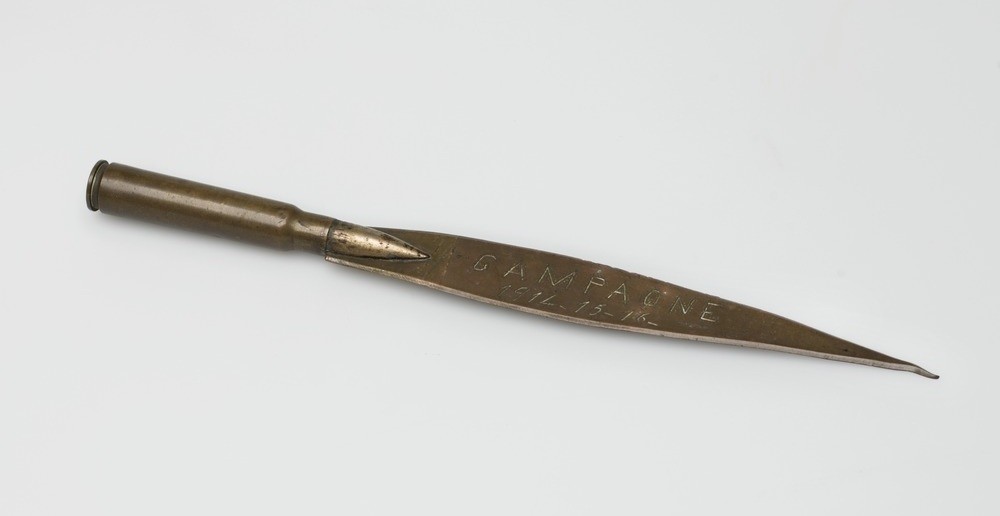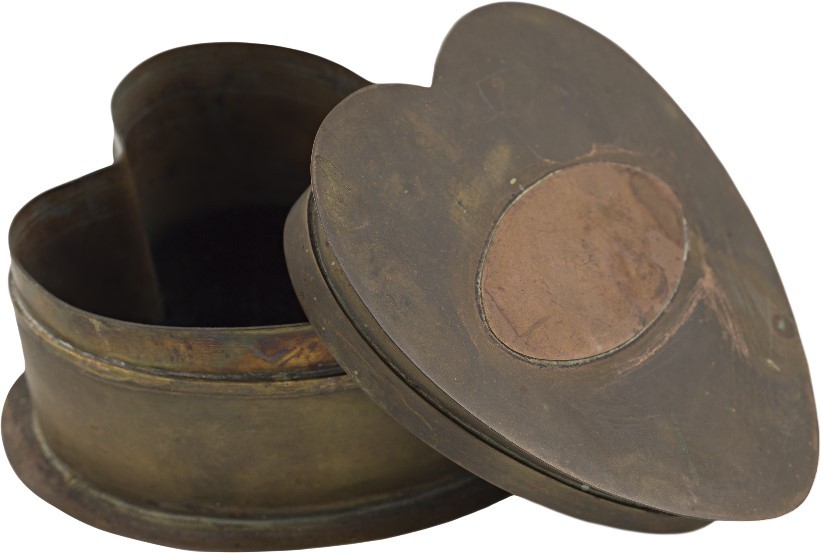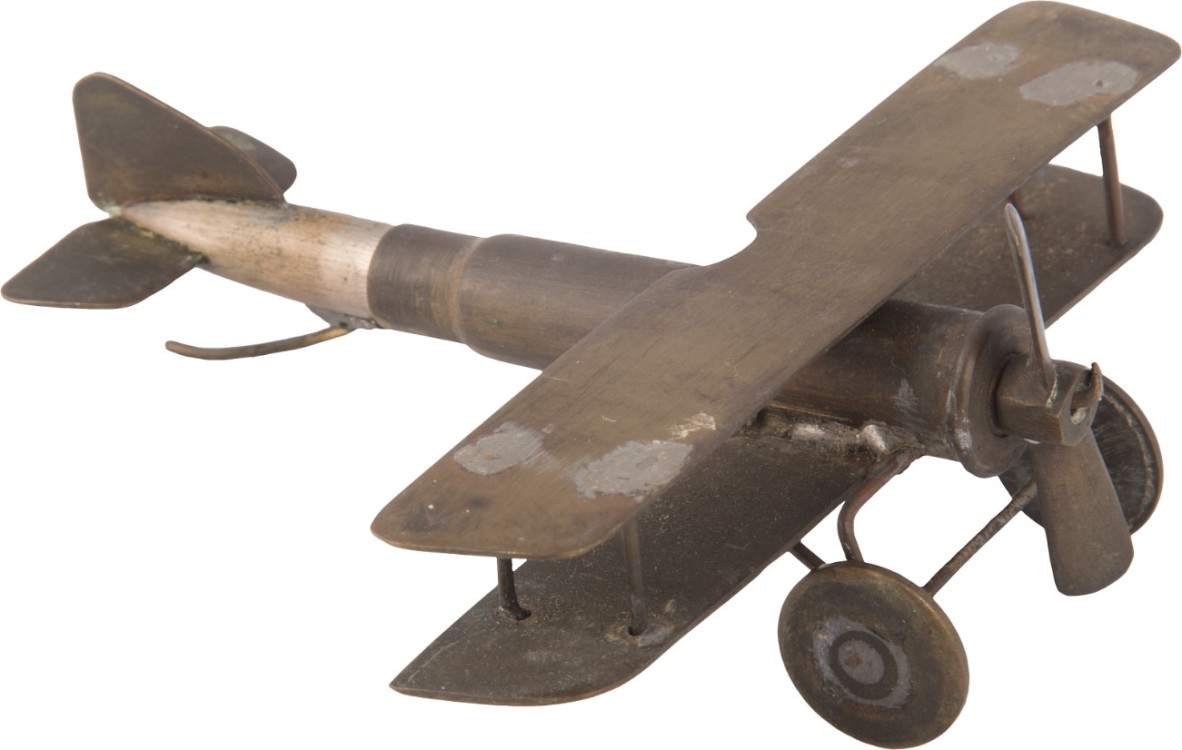Art in Wartime – Trench art
By Pauline Gordon, Anzac Square Memorial Galleries, Visitor & Information Services | 3 November 2020
The genre of art referred to as Trench Art is a type of folk art and crafts created during the course of a war or later from the remains of war materials. The First World War saw a huge rise in the number of artefacts being created by soldiers in down time in the trenches and thus the name trench art was applied to those articles. The name now covers items, relating to war, created during or soon after all conflicts by both military personnel and civilians. Those with skills and a desire to create made many wonderful souvenirs of their time abroad in the First and Second World Wars and those who did not could purchase art made by others for this purpose.
Art was also a valuable tool in the field of occupational therapy and rehabilitation of injured soldiers. When making wooden toys soldiers with weakened leg muscles could strengthen those using a treddle-powered saw. Those who were bedridden could be given simpler projects, like embroidery or carving, passing time and focusing on something other than their injuries and calming their troubled minds.
When soldiers in the trenches of Europe in World War One had moments of rest, many turned to creating small pieces of art with what they had available to them. Some used this to distract them from the horror around them and others to pass idle times. With thoughts of home and the loved ones they left behind servicemen began to create items as gifts or souvenirs.
The materials used were very much dictated by the location the soldier found himself in. On the frontline, copper driving bands from shells were a popular medium as they were numerous and, being a soft metal, pliable and able to be transformed with few tools. These bands were often beaten flat and then used to make letter openers, also called paper knives, or rings or brooches.

This letter opener was purchased by Frank Chenery when he served with the 26th Battalion c. 1916
State Library of Queensland, 30054 Frank Chenery Papers, 1916-1919.
Large brass shell casings were plentiful with literally millions being used on the Western Front. Men with access to workshops and tools, like engineers, were able to create far more complex metallic art forms with this more rigid material. The casings were repurposed into vases, ashtrays, water jugs, tobacco tins, jewellery boxes and umbrella stands.

This heart shaped box is made from a brass shell casing.
State Library of Queensland, 30693 Hugh Andrew Geraldton Campbell Papers, 1885-1964.
Hugh served with the 11th Field Company Australian Engineers.
Aluminium was used in making match boxes and cigarette cases. Paper weights can be found to have been made from any of these materials and often a combination of them. Bullet casings and projectiles were also included in many pieces of trench art.

This toy plane, obtained from a German soldier, is made from bullets, shells and other fragments.
State Library of Queensland, 30681 Frank Henry Verrall Memorabilia c. 1918.
Trench art was not just made by the soldiers on the front. Many prisoners of war (POWs) used the process of creating as a way of passing their long hours of captivity and a distraction from their predicament. POWs also used art to document their experience. This was immensely important to many men who believed their story may never, otherwise, be told.
Civilians living in the war zone also participated in the creation of trench art pieces to sell, as souvenirs, to soldiers passing through their region. As large sections of Europe had townships destroyed and their economies disrupted, this was a valuable source of income for a lot of people.
As populations began to rebuild their towns and lives, after the end of the war, trench art found a new audience. People wanting to see the graves of their loved ones and tourists spending time in battlefields wanting a historical souvenir of their visit could purchase artefacts made from First World War materials possibly found in the very fields where those loved ones had fought.
These artefacts are an important representation of a significant time in our history. They are a physical reminder of places and circumstances experienced by an entire generation of our population, of which we can only imagine. In many of these pieces of trench art you can see the love and longing of young men who knew they may not ever see home again.
More information
Anzac Square Memorial Galleries - https://www.anzacsquare.qld.gov.au/
One Search catalogue - http://onesearch.slq.qld.gov.au
Ask Us - /plan-my-visit/services/ask-us
Comments
Your email address will not be published.
We welcome relevant, respectful comments.